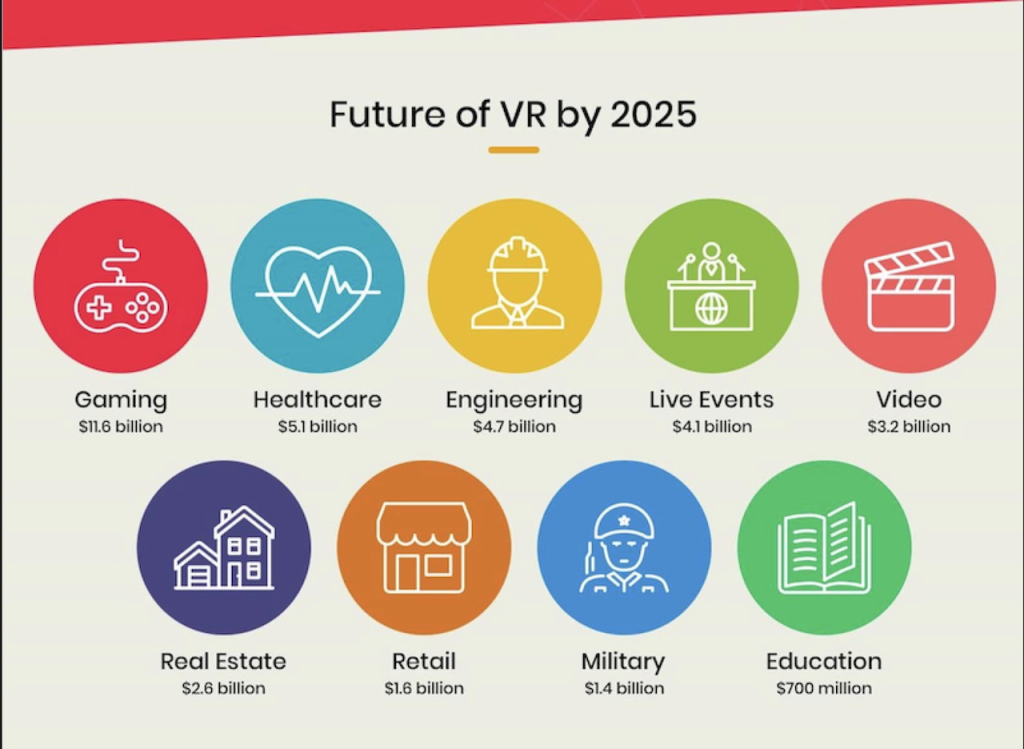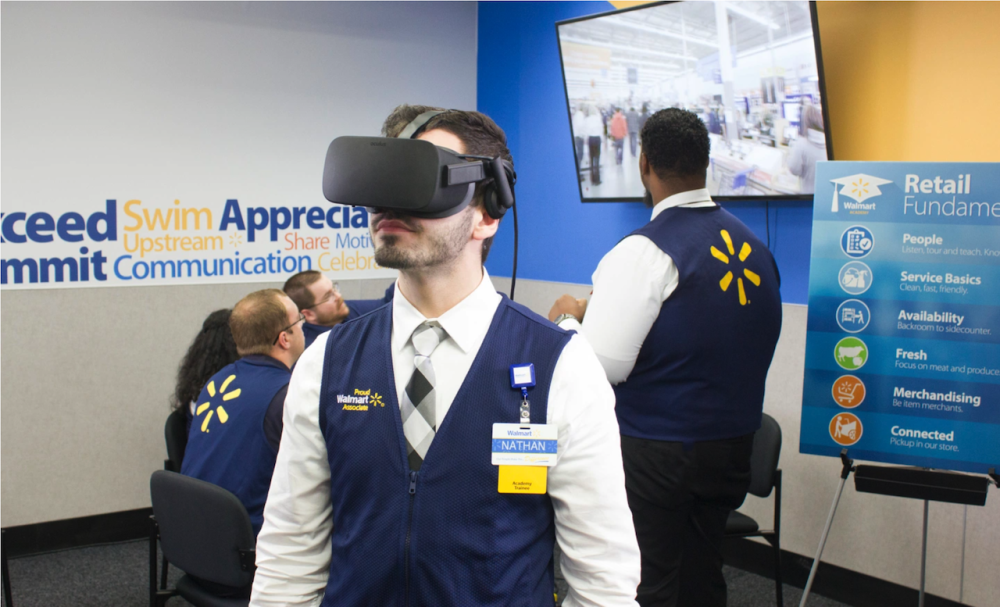Virtual Reality (VR) is seeing its importance rise as a marketing tool for businesses across the board. While sounding like a tool that belongs on the Starship Enterprise, it’s currently proving its worth as a valuable asset for retailers in particular. In that sector, it’s being deployed to boost everything from customer service to the in-store shopping experience.
Online retailers are beginning to wise up to the benefits of implementing a VR strategy for improved customer or user experience (UX). After all, the inherent natures of VR and eCommerce mean the two go hand in hand. Both are real-world experiences recreated online. Today, where content is seen as a leading force of lead generation, VR is how you create lasting customer experiences.
After all, is it more engaging to read a product description or see it? You can read about a bed, or see what it looks like in your room. Learn about the fabric of a dress, or try it on with your camera. VR has the potential to fundamentally redefine how we shop online, allowing retailers to bring their products to life in the customer’s home.
So, where does that leave your everyday retailer? Let’s look at five current ways retailers are integrating VR.

1. Exploring Virtual Spaces
To add another layer to the online shopping experience, retailers are creating virtual showrooms and stores. These offer customers a way to experience the products for sale in a way usually reserved for brick and mortar spaces allowing them to go from Shopify store to see products in real life.
Ikea customers, for example, can browse an entire catalog of furniture, kitchen equipment, and fittings using a VR headset. That allows them to get a sense of the space an item would take up, and how it looks when combined with others.
IKEA also offers an AR app for customer smartphones. AR (augmented reality), as opposed to VR, adds digital elements to a live view often using the camera on a smartphone.
Ikea’s AR app gives the user a mocked-up version of how their home could look when fitted with various items or products. What users see is a virtually generated version of their home, and the AR experience allows them to become spatially aware of how various products would fit into, and look in their home.
2. Telling A Story
VR allows an audience to be fully invested in a story. No other medium provides the user with a truly immersive experience. This is useful for retail brands because they can now deliver the central premise of their brand story via a wholly sensory experience. This allows them to forge meaningful connections with customers, and boost engagement, like never before.
Today’s consumer is laid back yet tech-savvy. What they want is entertainment and value beyond a Tweet. Essentially, consumers want to be immersed in what a retailer, or a brand, has to say. VR gives companies the tools to fulfill precisely that desire.
One Aldwych Hotel in London partnered with Dalmore Whisky to give customers a “VR whisky cocktail”. That was a drink served with a VR headset so that someone consuming the cocktail could virtually visit the distillery. They could see where the whisky was aged or explore the barley fields and water sources used to make the drink in their hand. That’s a prime example of using VR to tell the story of your product.
3. Training Staff
Beyond consumers, VR can also be utilized to provide staff with training in real workplace environments. Without leaving the office, both backroom and front-line staff can make use of VR to learn how to respond to certain scenarios. Examples are diverse and include dealing with an angry customer, or operating machinery like forklifts and conveyor belts.
It shortens the onboarding process and lets them try out new methods in a safe environment. What’s more, it can better equip them to deal with emergencies like robberies, fires, and other dangerous situations.
DHL Express built a VR training platform to boost efficiency in Unit Load Device (ULD) stacking and safety. 90% of all participants lauded the platform for helping them improve efficiency and work better. The intelligent application of VR for training can extend across retail and many other sectors. Better trained staff are then able to deliver enhanced UX.
4. In-Store VR
VR isn’t only for eCommerce. The tech can also get utilized in-store to make the consumer’s experience more compelling and exciting. That, as a result, adds real, tangible benefits for the retailer.
The layout of retail spaces is becoming smarter. Design increasingly concentrates on maximizing foot traffic in the right places, at the right times. VR can have an impact in this regard, too.
A VR installation in-store can increase foot traffic by creating a buzz around a particular section of the shop. In turn, this leads to increased dwell times from customers. If the plan for the VR area is well crafted, that can mean more sales for essential items and increased browsing of important product categories.
British retailer Marks & Spencer designed a pop-up VR showroom that it showcased in key cities around the country. This allowed consumers wearing headsets to drag and drop items from the retailer’s high-end LOFT homeware range. They could then create what M&S described as “their ideal living space”.
5. Customer Retention
A happy customer is one who comes back. If a customer has a pleasant experience while shopping with a retailer, they’re more likely to return. With personalized experiences like engaging chatbot platforms or those delivered by VR and AR technology, the chances of a positive experience are higher. Also, if a customer has discovered and purchased a product through a VR experience, they’re less likely to return it.
The Internet of Things is another area evolving quickly alongside VR and AR. Retail kingpin Amazon is leveraging the power of smart devices via its new Amazon Dash service. A physical device and virtual Dash buttons help users engage in smart home replenishment of everything from cat food to pasta. It’s this kind of tech development that all retailers must aspire to. It’s why leveraging VR is a necessity rather than a choice.
Virtual Reality has already made inroads in the retail sector. When one considers the benefits it offers, it looks like it’s here to stay. Major retailers across multiple sectors are already reaping the benefits of VR technology.
The data generated from VR, powered by the immediacy of edge computing, will help understand buying patterns and preferences. That, in turn, can help retailers deliver an enhanced experience to the consumer. The future of retail will rely heavily on new and emerging tech. Both AR and VR will play a considerable role in this tech-driven retail industry for years to come.
Sam O’Brien is the Senior Website Optimisation & User Experience Manager for EMEA at RingCentral, a global UCaaS systems provider. Sam has a passion for innovation and loves exploring ways to collaborate more with dispersed teams. He has written for websites such as IT Toolbox and Jaxenter. Here is his LinkedIn.















